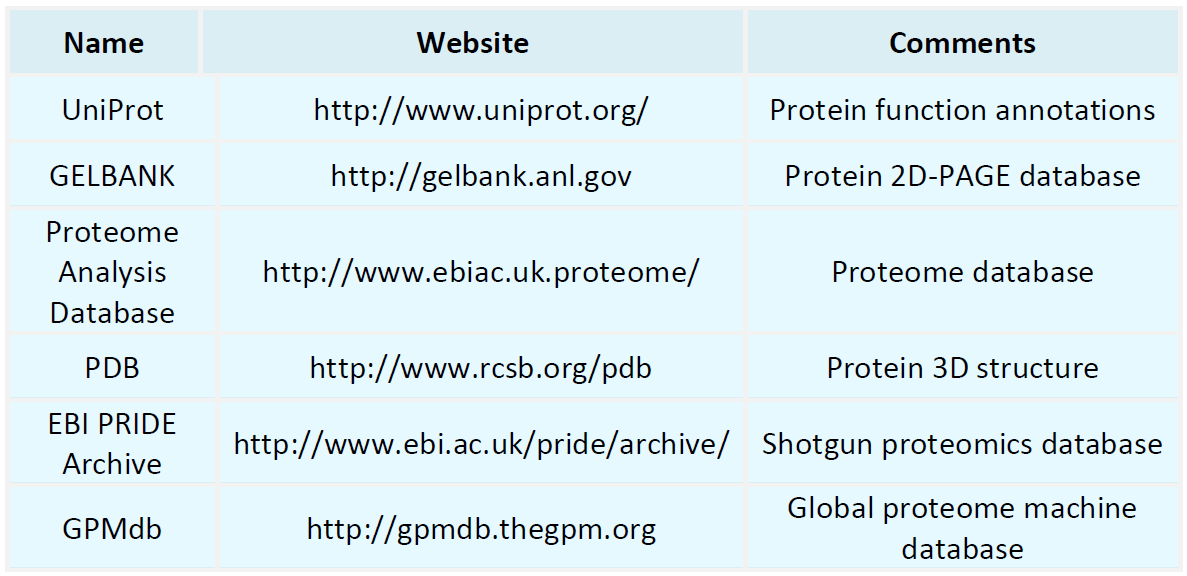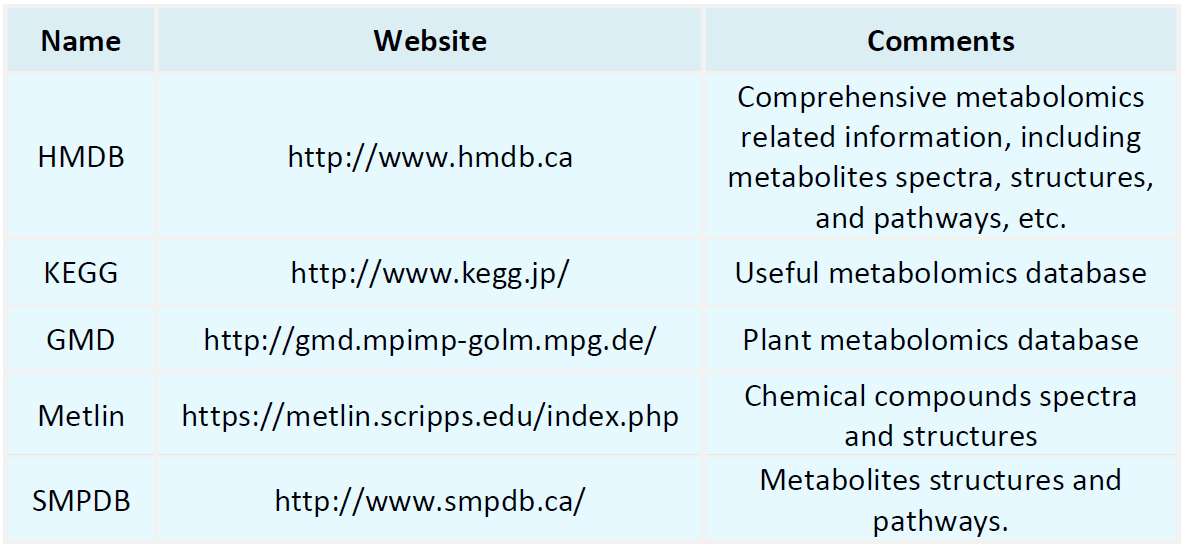Resources
Proteomics Databases

Metabolomics Databases

-
• Tools for Label-free Peptide Quantification
Label-free quantitative proteomics (LFQ) has emerged as a crucial method for quantitative analysis in life science research, owing to its simplified sample preparation, broad applicability, and the absence of label-induced interference. Particularly in fields such as systems biology, disease mechanism investigation, biomarker discovery, and drug development, LFQ strategies are playing an increasingly prominent role. This paper systematically reviews the principles and characteristics of mainstream .......
-
• Issues and Resolutions in Label-Free Quantitative Mass Spectrometry
With ongoing advances in systems biology, label-free quantification (LFQ) proteomics has emerged as a mainstream strategy in life science research. This approach offers distinct advantages, such as eliminating the need for costly isotope labeling, enabling simpler workflows, and supporting high-throughput sample processing. In particular, LFQ based on mass spectrometry (MS) has been extensively adopted in applications such as biomarker discovery, disease mechanism investigation, and drug action analysis....
-
• How Mass Spectrometry Enables High-Resolution Label-Free Protein Quantification?
Label-Free Quantification (LFQ), owing to its simplicity, flexibility, and broad applicability, has become a crucial approach in proteomics research. Achieving high-resolution label-free protein quantification via mass spectrometry requires systematic optimization across all stages—from sample preparation and mass spectrometry acquisition to data processing—to ensure accuracy, sensitivity, and reproducibility of the resulting data. Sample Preparation: Ensuring Consistency and Integrity 1. Sample.......
-
• FAQs and Solutions for Unlabeled Quantitative Proteomics (LFQ)
Label-Free Quantification (LFQ) is a widely adopted approach in proteomics for quantifying proteins, favored in both basic research and clinical translation due to its procedural simplicity, elimination of stable isotope labeling, and broad applicability. However, the strong dependence of LFQ experiments on sample preparation, mass spectrometry acquisition, and data analysis presents substantial challenges for researchers in practical applications, including high rates of missing data, poor reproducibility
-
• Essential Analysis Tools for Label-Free Proteomics: A Comprehensive Review of MaxQuant and DIA-NN
Label-Free Proteomics has gained widespread application in basic biological research, disease mechanism elucidation, and biomarker discovery due to its streamlined workflow, relatively low cost, and broad applicability. However, the processing of LFQ data remains challenging, encompassing large-scale mass spectrometry data handling such as feature extraction, quantification, differential analysis, and functional annotation. Therefore, selecting and effectively utilizing appropriate analytical tools is......
-
• How to Improve Data Quality and Reproducibility in Label-Free Proteomics?
Label-free Quantitative Proteomics (LFQ) has emerged as a widely adopted approach in biomedical research, owing to its straightforward sample preparation, broad applicability, and relatively low cost. However, challenges related to data quality and reproducibility remain major obstacles that limit the depth and reliability of LFQ applications. In this article, we systematically examine the key factors that influence LFQ data performance and present optimization strategies for each critical stage.......
-
• LC-MS-Based Label-Free Quantification: High-Throughput Protein Identification & Analysis
In life science research, accurately and comprehensively characterizing changes in protein expression is essential for understanding biological processes and disease mechanisms. Label-free quantitative proteomics (LFQ) is increasingly recognized as a valuable approach for protein quantification, offering advantages such as high flexibility, minimal sample requirements, and cost efficiency. As a core analytical platform, liquid chromatography–mass spectrometry (LC-MS) provides the high-throughput capacity...
-
• A Guide to Label-Free Quantitative Proteomics: From Experiment to Data Analysis
Label-Free Quantitative Proteomics (LFQ) has emerged as a critical tool in modern biomedical research. Its advantages—eliminating the need for isotopic labeling, simplifying sample preparation, and generating rich datasets—have led to its widespread application in studies of disease mechanisms, drug target identification, and biomarker discovery. By integrating high-resolution mass spectrometry with rigorous data analysis, LFQ enables systematic comparisons of protein expression levels across diverse ......
-
• A Complete Guide to Label-Free Quantitative Proteomics (LFQ) in Biomedical Research
In the post-genomic era, genetic information alone is insufficient to capture the dynamic regulation of biological processes. Proteins, as the primary effectors of gene function, directly reflect the functional state of cells. To comprehensively monitor protein expression dynamics, proteomics technologies have emerged. Among them, Label-Free Quantitative Proteomics (LFQ) stands out for its label-free nature, flexible sample handling, and scalability, making it widely applicable across biomedical research...
-
• Applications of LC-MS/MS in Label-Free Quantitative Proteomics
LC-MS/MS: A Foundational Technology for Label-Free Quantification Label-Free Quantification (LFQ) has emerged as one of the predominant strategies in modern proteomics, largely driven by advances in LC-MS/MS technology. LC-MS/MS integrates liquid chromatography (LC) and tandem mass spectrometry (MS/MS), where LC efficiently separates complex peptide mixtures, and MS/MS subsequently performs both qualitative identification and quantitative analysis. In LFQ, the signal intensity at the MS1 level—specifically
How to order?







